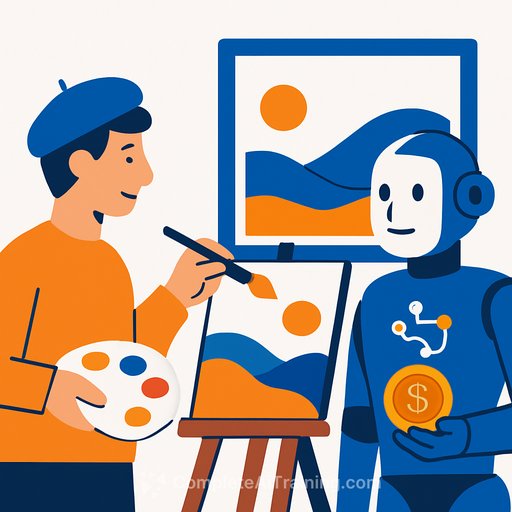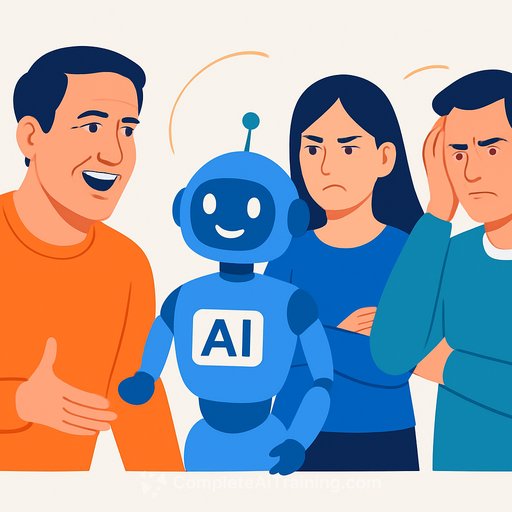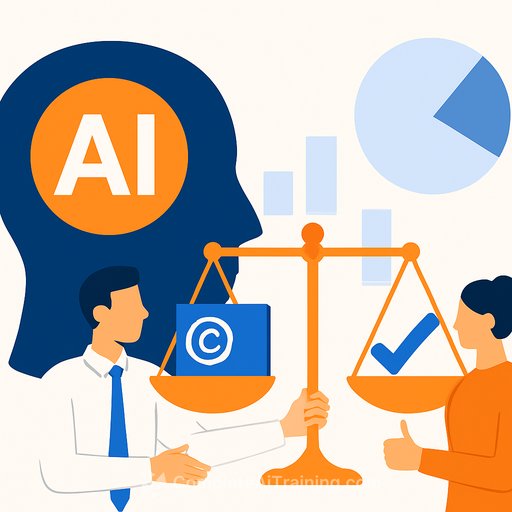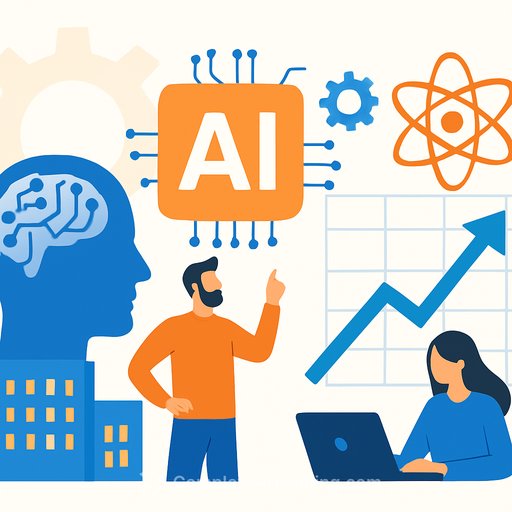AI, Copyright, and Your Creative Livelihood: What Matters Now
Generative AI can mimic style, output at scale, and undercut prices. That forces a hard question: how do we protect creative labor while using new tools to win more work, not lose it.
The tension isn't just ethical. It's legal, economic, and practical-and it directly affects your portfolio, pricing, and client pipeline.
What's actually at stake
Most large models were trained on massive datasets that likely include copyrighted work without clear consent or payment. That blurs authorship, originality, and whether outputs should be treated as derivative.
Copyright law was written for human creators and discrete works. It doesn't map neatly to model training, weights, and probabilistic outputs-creating uncertainty for artists and AI companies.
Why this feels off to many artists
- Style imitation without request or credit can erode market value for living artists.
- Even "anonymized" datasets still learn patterns that recreate a look clients recognize.
- Clients can be confused about what's "original," who owns rights, and what they're paying for.
Where current law falls short
- Authorship: Human intent vs. machine generation is still unsettled in many jurisdictions.
- Derivative tests: How close is "too close" when a model outputs your signature style.
- Training vs. copying: The law wasn't built for learning from billions of examples at once.
How this affects your income
- Commissions shift to "AI-first" briefs with lower budgets and tighter timelines.
- Brand dilution as lookalikes flood marketplaces and social feeds.
- Licensing confusion delays deals or kills them entirely.
- Clients assume "AI can do it," forcing you to justify rates you used to command.
Practical moves you can make now
- Add clear terms to your site and proposals: "No use of my work (including style) for AI training without a license."
- Use metadata and provenance: embed authorship and edit history. Consider the C2PA provenance standard for proofs that travel with files.
- Deploy opt-out signals: add "noai"/"noimageai" to robots/meta tags on your site and disable API access on portfolio hosts if possible.
- Offer two products: "Human-only" work at a premium and "AI-assisted" with transparent process and rights.
- Watermark previews; deliver clean finals post-payment. Keep originals offline or behind client portals.
- Track infringements with reverse image search; file takedowns for direct copies and unauthorized uses.
- Join collectives or guilds exploring collective licensing. A bigger seat at the table means better terms.
- Document your process. Notes, drafts, and working files help prove authorship and value.
Policy ideas being discussed (and why they matter)
- Licensing frameworks (including collective or compulsory) so training on copyrighted work pays creators.
- Dataset transparency: public disclosure of sources and provenance so you can see whether your work was included.
- Attribution standards and watermarking to indicate AI involvement and preserve credits.
- Clear rules on when AI outputs are derivative and how moral rights apply.
- New, dataset-specific rights that fit machine training better than old categories.
- Opt-out registries or paid-inclusion platforms run by industry groups.
How to talk to clients (scripts and clauses)
- Scope: "This proposal includes concepting, production, and two rounds of revisions. I do not permit my work to be used for AI training without a separate license."
- Rights: "Client receives usage rights for [channels/time/geos]. Training rights, style transfer, or dataset inclusion are excluded."
- Disclosure: "I will note any AI-assisted steps in the process. Final deliverables meet the specified originality and licensing terms."
- Premium option: "Human-only creation is available at +20% for buyers who want zero AI involvement."
What to watch next
- Legal rulings on training and derivative works; updates from the U.S. Copyright Office AI initiative.
- Dataset disclosures and opt-out tools from major platforms.
- Marketplace policies on AI-generated uploads and provenance labels.
- Pilot programs for collective licensing and creator payouts.
Skill up without losing your voice
Use AI as a production assistant, not a replacement. Keep your taste, judgment, and point of view as the product clients buy.
If you want curated options to learn and vet tools, explore courses and tool lists from Complete AI Training: Generative Art Tools and practical guides on Prompt Engineering.
Creative checklist
- Post your terms; add "no AI training" language everywhere you license work.
- Embed provenance and use watermarks on previews.
- Offer clear human-only and AI-assisted options.
- Document your process and archive working files.
- Join collective efforts and stay current on policy.
- Keep learning so you can direct tools, hit deadlines, and protect your margins.
Bottom line
You don't have to pick sides between art and software. Protect your rights, charge for your taste, and use technology to compress the busywork-so you have more time for creative decisions only you can make.
Your membership also unlocks:






